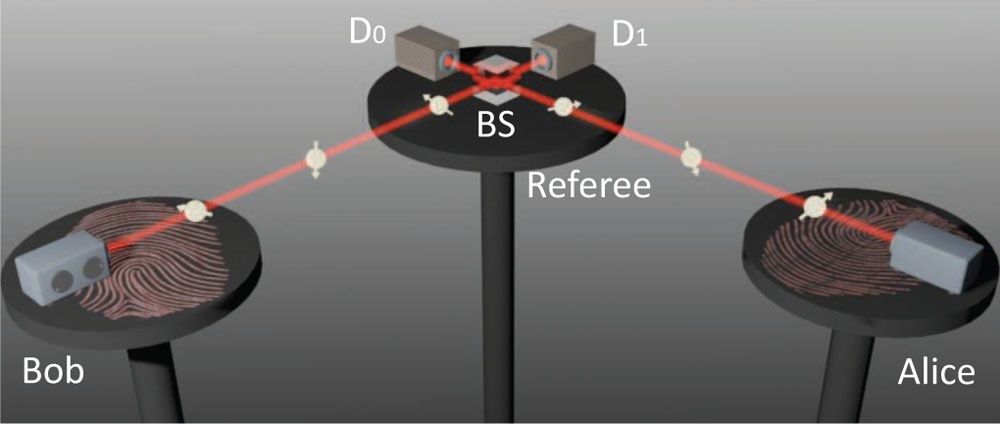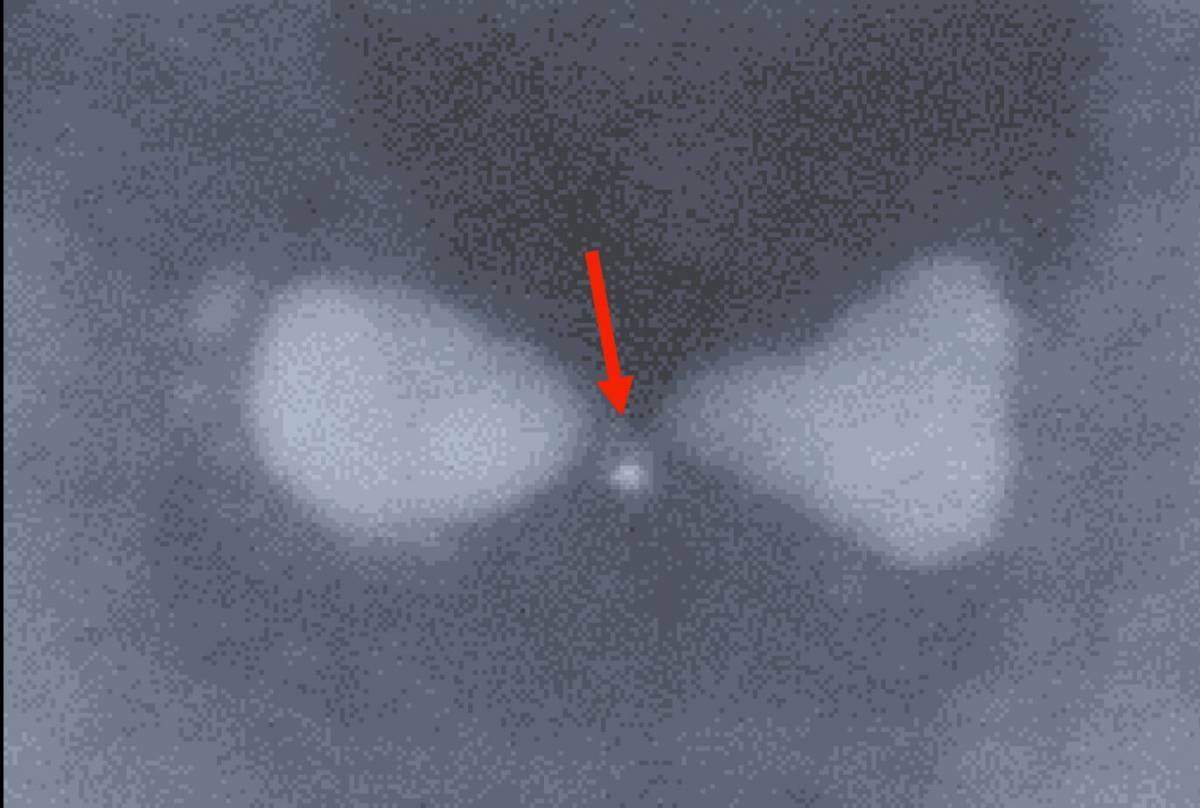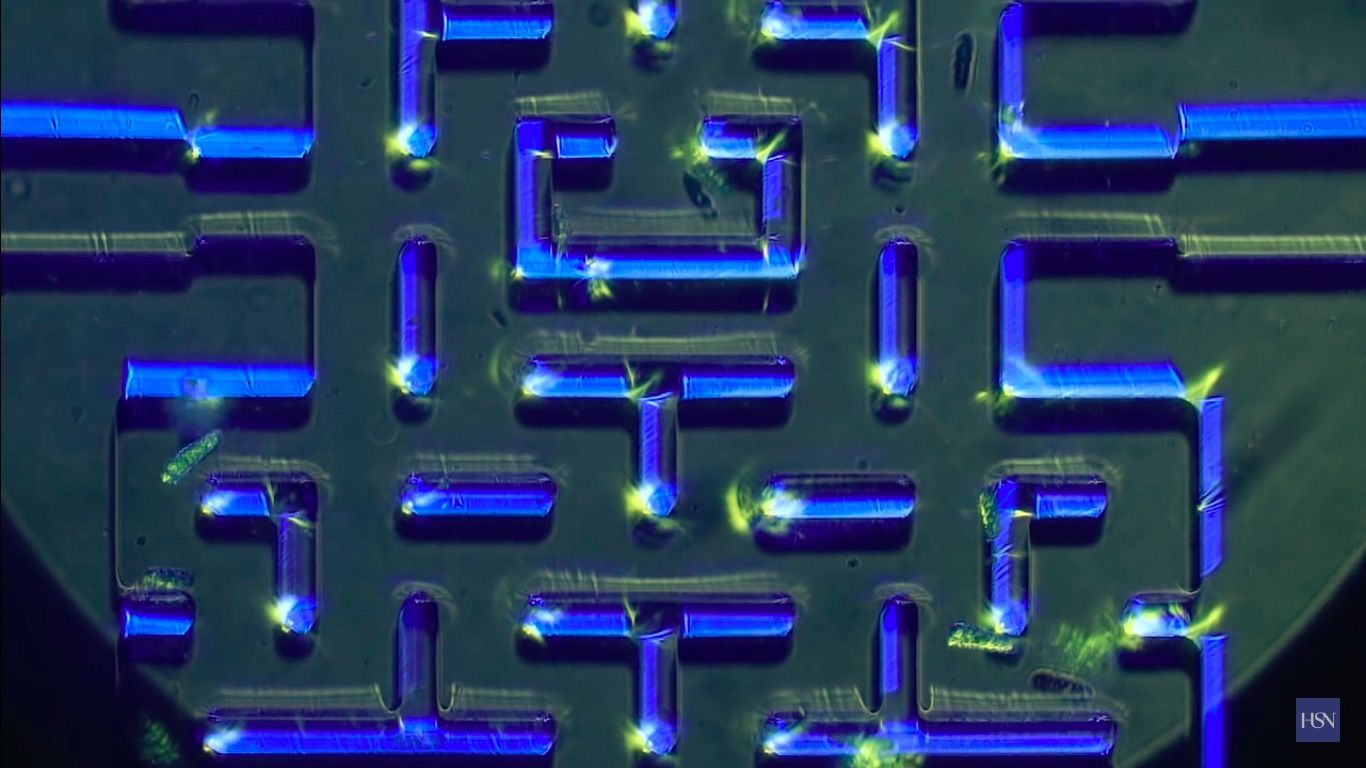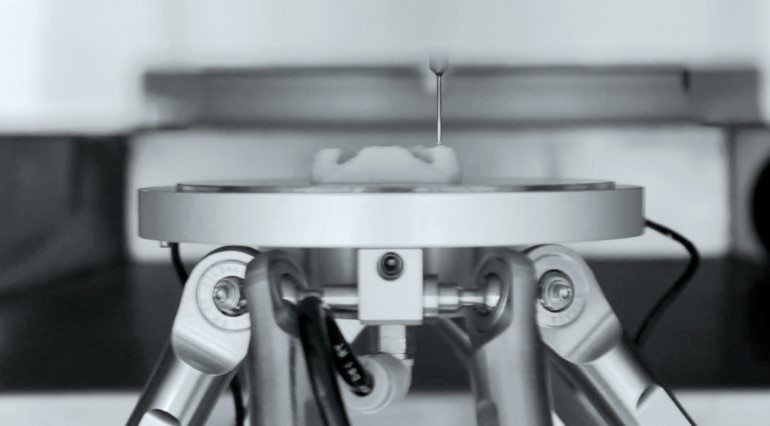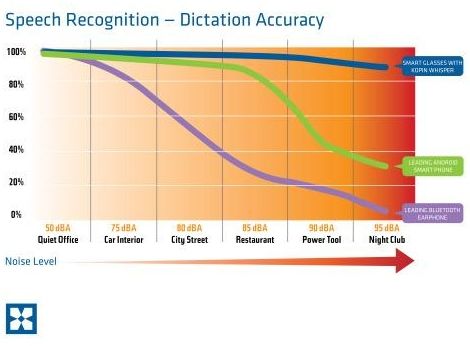Page 10572
Jul 5, 2016
Quantum fingerprinting surpasses classical limit
Posted by Karen Hurst in category: quantum physics
Nice.
(Phys.org)—As the saying goes, no two fingerprints are alike, and the same is true for quantum fingerprints. Just as a human fingerprint is only a fraction of the size of a person, yet can be used to distinguish between any two people (at least in theory), quantum fingerprints are exponentially smaller than the string of information they represent, yet they can be used to distinguish between any two strings.
Ever since quantum fingerprinting was first proposed in 2001, it has for the most part remained an interesting theoretical concept, with only a handful of protocols having managed to experimentally demonstrate the idea.
Continue reading “Quantum fingerprinting surpasses classical limit” »
Jul 5, 2016
Israeli robot ship fires torpedo
Posted by Karen Hurst in categories: military, robotics/AI
An unmanned Israeli vessel has test-fired a torpedo.
The Seagull, from Elbit Systems, demonstrated its weapons capability by launching a torpedo off the Israeli coast near Haifa, according to Israeli news site Ynetnews.
“The test was carried out in the Haifa area, and its primary goal was to determine if it’s possible to arm and launch a relatively large precision missile from an unmanned ship,” Ynetnews said. “The next phases in the development of the system are expected to include launching the torpedo at a target to destroy it.”
Jul 5, 2016
IARPA puts up $100K for 3D satellite mapping solution
Posted by Karen Hurst in categories: robotics/AI, satellites
“Numerous commercial satellites — including newly emerging CubeSats — cover large areas with higher revisit rates and deliver high-quality imagery in near real-time to customers,” according to IARPA Program Manager HakJae Kim. “Although the entire Earth has been — and continues to be — imaged multiple times, fully automated data exploitation remains limited.”
The two-phase Multi-View Stereo 3D Mapping Challenge will kick off July 11 with the ultimate goal of creating a 3D mapping system, as well as a community citizen scientists interested in working on future crowdsourcing challenges.
The challenge includes a total of $14,000 in prizes during the initial Explorer phase, though the full challenge has a prize pool of $100,000. Prize allocations for the Master contest have yet to be determined.
Continue reading “IARPA puts up $100K for 3D satellite mapping solution” »
Jul 5, 2016
Bowtie-shaped nanostructures may advance the development of quantum devices
Posted by Karen Hurst in categories: computing, nanotechnology, particle physics, quantum physics
Bowtie-shaped nanoparticles made of silver may help bring the dream of quantum computing and quantum information processing closer to reality. These nanostructures, created at the Weizmann Institute of Science and described recently in Nature Communications, greatly simplify the experimental conditions for studying quantum phenomena and may one day be developed into crucial components of quantum devices.
The research team led by Prof. Gilad Haran of Weizmann’s Chemical Physics Department — postdoctoral fellow Dr. Kotni Santhosh, Dr. Ora Bitton of Chemical Research Support and Prof. Lev Chuntonov of the Technion-Israel Institute of Technology — manufactured two-dimensional bowtie-shaped silver nanoparticles with a minuscule gap of about 20 nanometers (billionths of a meter) in the center. The researchers then dipped the “bowties” in a solution containing quantum dots, tiny semiconductor particles that can absorb and emit light, each measuring six to eight nanometers across. In the course of the dipping, some of the quantum dots became trapped in the bowtie gaps.
Under exposure to light, the trapped dots became “coupled” with the bowties — a scientific term referring to the formation of a mixed state, in which a photon in the bowtie is shared, so to speak, with the quantum dot. The coupling was sufficiently strong to be observed even when the gaps contained a single quantum dot, as opposed to several. The bowtie nanoparticles could thus be prompted to switch from one state to another: from a state without coupling to quantum dots, before exposure to light, to the mixed state characterized by strong coupling, following such exposure.
Continue reading “Bowtie-shaped nanostructures may advance the development of quantum devices” »
Jul 5, 2016
Quantum physics meets IT security
Posted by Karen Hurst in categories: computing, government, quantum physics, security, singularity, space
Nice that they are trying to ensure this. However, as we integrate more tech into Biocomputing space and our efforts in achieving singularity; you will need some level of a medical/ or bio background.
It’s hard enough for IT security managers to keep with the latest in conventional computing. Cloud Security Alliance and the US government are trying to make sure you don’t need a physics degree, too.
Jul 5, 2016
Scientists Played Pac-Man With Real Microscopic Organisms
Posted by Karen Hurst in category: entertainment
Jul 5, 2016
Multi-planar Processing: Rhinoplasty Implant
Posted by Karen Hurst in categories: 3D printing, biotech/medical, cyborgs
With the advantage of high resolution providing facial designs that can be created based on the FACS (facial active coding system), 3D photography scanning and printing of the subject will create images with connected feature grids. This allows the angles of the craniomaxillofacial surface to be observed for specific unique aspects of physical characteristics, for underlying anatomical bone structures based on eye to midline features.
The nasal process provides the centerpiece of anatomical facial mapping and organization which affects how the individual is viewed by the world around them. These connected grids with the aid of imaging allow for facial feature approximation for important craniofacial-facial planning creating vital structures that will be 3D printed according to accepted innovation in FACS (Facial active coding system) design. Medical grade silicone soft tissue prosthetics with colour are being created out of the UK with the Picsisma printer by Fripp Design as far back as 2013.
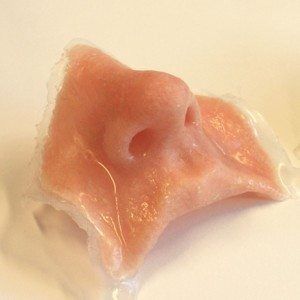
Continue reading “Multi-planar Processing: Rhinoplasty Implant” »
Jul 5, 2016
Augmented-reality headsets could help helicopter rescue pilots fly in dense fog
Posted by Karen Hurst in categories: augmented reality, engineering
Could augmented reality headsets help helicopter rescue pilots to fly more safely in extreme weather conditions — including heavy fog — in which they have poor visibility? That’s the question set out by a group of researchers at Germany’s Technical University of Munich (TUM). Their answer? An overwhelming yes.
Carried out in collaboration with the Institute of Helicopter Technology, the project uses a helicopter-mounted LIDAR (Light Detection and Ranging) system to create virtual images of upcoming hazards and other obstacles. This signal data is then processed onboard the helicopter and transmitted to the transparent head-mounted display worn by pilots.
“Databases containing obstacles and terrain data are used together with real-time data from sensors in order to substitute the lost visual cues in degraded visual environment” Franz Viertler, a professor of aeronautical engineering who worked on the project, told Digital Trends. “The other part of the research then deals with how to best visualize the data for the pilot in order to enable a safe flight. The head-mounted display is a perfect means to do this, because the pilots can keep their eyes out of the window, while they get additional information about hazardous obstacles.”
Continue reading “Augmented-reality headsets could help helicopter rescue pilots fly in dense fog” »
Jul 5, 2016
Kopin’s Whisper Chip: Positioned To Enable Flawless Voice User Interfaces For Millions Of Users Globally
Posted by Karen Hurst in category: computing
Finally, could we see no more confusions in our voice interfaces.
Perfecting voice interfaces.
The entire mobile industry is moving rapidly towards voice as the primary input element for our devices.

